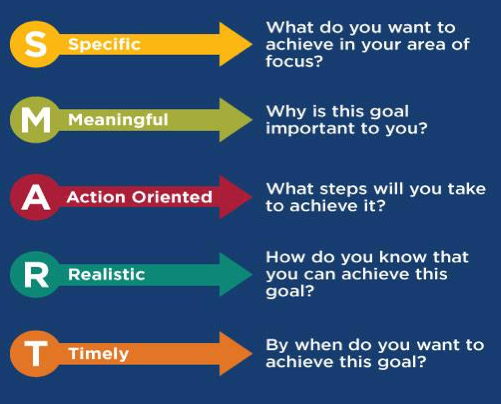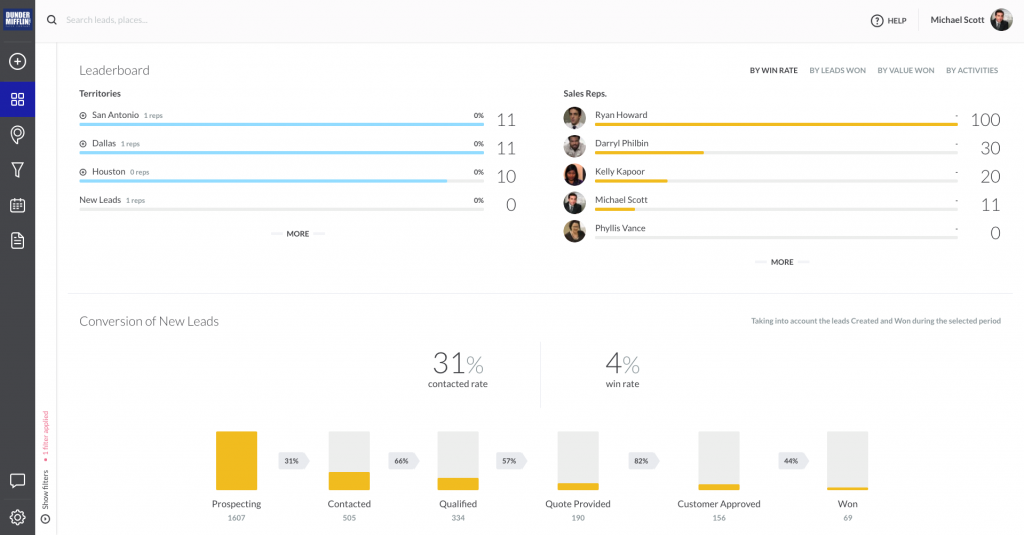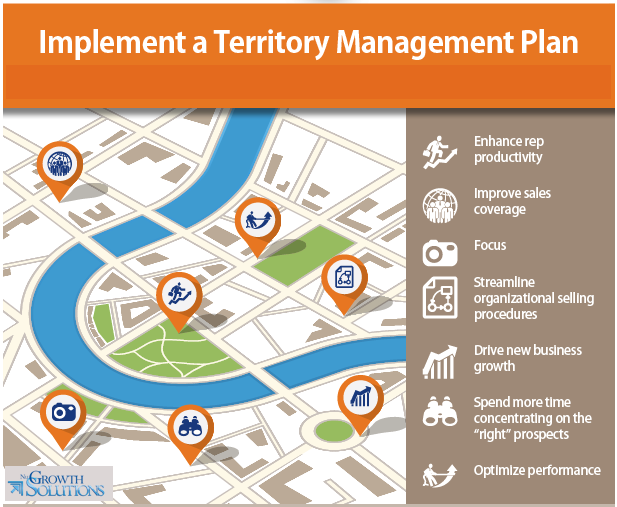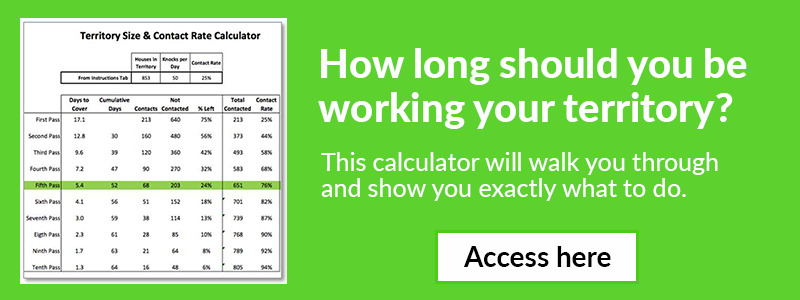The landscape of canvassing is often far more complex than most people realize. The little intricacies of door knocking often lead to many conflicts that arise whether they’re realized by sales teams or not. If you think everything is running great, good for you! Maybe they are, and we’re not trying to tell you things are bad. But how much do you really know about what’s under the hood?
Think about the process of taking your car or truck into an auto shop. You bring it in to get one minor thing done and what happens…? The serviceman tells you they’re going to do a complete 150-point inspection. If you’re anything like me, the first thought through your head is, “yeah, go ahead and tell me how many things on my vehicle need to be serviced because I know you’re going to try and charge me an arm and a leg, but I’m not buying what you’re selling.”
Aside from the blatant distrust I have toward this oh-so-lovely inspection, I know there’s likely to be other issues with my vehicle that need to be fixed. After the initial feelings of anger feeling like I’m getting ripped off, I start to look at the report and think logically. Sure, some of the issues with my car are minor and not an immediate concern, but the others need to be fixed now, not later.
If you’re picking up what I’m putting down you’ll get this: Your sales process may seem to be running smooth right now and your sales reps may be doing pretty well, but if you don’t correct the canvassing conflicts (minor or major), they’re going to lead to a larger problem down the road. Whether it’s getting a flat tire and needing to replace a member of your sales team or it’s replacing the engine where you need to completely revamp your sales process, you’re going to experience problems by not recognizing or addressing the issues that exist.
The most common types of canvassing conflicts that door to door sales organizations experience:
| How to allocate equal opportunity for each sales rep
| Sales reps poaching their coworkers territories
| How to effectively design sales territories
| How to select the best method of designing sales territories
| How sales reps should handle referrals they receive that are outside their territory
| How to hold sales reps accountable
Designing Sales Territories
One of the most prevalent canvassing conflicts that exists in the door to door sales industry is how managers create and assign territories for their foot soldiers. Well-designed sales territories can actually boost sales rep productivity by 10 – 20%. Establishing an effective and efficient sales territory design process can be extremely time consuming, especially in the beginning, but it’s imperative that you invest the time up front.

The time you initially put it in will pay large dividends moving forward, not only as it relates to how much quicker the process will be, but your sanity as well. There’s countless strategies that door to door sales companies utilize to design sales territories. Without the initial strategizing and design process, you’ll miss out on numerous quality prospects and pull your hair out trying to ensure you covered the right areas.
One reason sales territories create a canvassing conflict is because they’re not updated. Sales territories that are not adjusted periodically can lead to situations where growth in your territories is constrained by as much as 20 – 30%. Limited growth means less potential for canvassers. Less potential means less commission. Less commission equals more frustration and more problems.
Other conflicts that arise as a result of ineffective sales territory design:
| Sales reps targeting the wrong prospects
| Hiring and retention problems in select territories
| Negativity influencing your sales culture
| Neighborhood not being completely saturated
5 Critical Components for High-Performing Sales Territory Design

#1 | Revenue Source
To avoid canvassing conflicts and design sales territories that will produce results, you need to start by breaking down where your revenue comes from, where your current customers are located, and the revenue generated by lead source: inbound vs outbound.
It’s easier to get a new customer in an area where you already have existing customer. Determining where your best and most loyal customers are located geographically is an exceptional strategy to use when designing territories for this reason. Historical sales data will become your new best friend and is the best predictor of future success.
Inbound leads are a cheap lead source with a high conversion rate. The only leads that are cheaper with a higher conversion rate are referrals. Focus on the demographics like geography, industry and size before building a strategy to divide them up as evenly as possible across your sales team. Focus on the amount of revenue generated vs the number of leads generated.
#2 | Rank Talent
Sales is an extremely competitive environment and your canvassers know that. Evaluate your team using metrics to find out how they stack up against each other and identify your top, middle and low level performers.
| What’s their quota?
| Do they consistently achieve their targets?
| How many current customers and prospects are in their funnel?
| How many viable prospects are located in their territory?
| After ranking each member of your sales team, match the most fruitful territories with the highest performing sales reps.
#3 | Goals
Accountability produces results. Establish SMART goals to outline what you want to accomplish as a company.

Profitability (Least Risky): If your goal is increase your profit margins or reach profitability, determine which territories you’ve had the most success in and double down on what’s already working. You should also analyze what made these sales territories successful and identify similar territories for your team to work.
High-Growth: If your focus is to simply drive revenue, focus your attention on identifying the characteristics of territories that have performed well. After identifying those, create all new territories around these characteristics. Territories that haven’t been worked mean prospects haven’t heard from you. You’ll be able to generate some quick wins. This is a long-term play that will generate growth over time.
Prospecting / New Markets: To establish yourself in a new market segment or determine if it’s viable territory worth spending the time in, send a canvasser into an area to accomplish a specific task. For example, send your top 3 canvassers into an area you’re interested in working to knock 200 doors and see how many appointments they’re able to set. Is this higher or lower than their average, and the team average? This will help determine exactly what’s needed to succeed in that market.
#4 | Measure Performance
“What gets tracked gets measured.” Tracking performance against your main KPI’s for each territory is extremely valuable because it will provide key insights into how each canvasser is performing. You’ll have the ability to recognize trends and determine efficiencies and inefficiencies within the sales department.

These metrics will help you to design higher quality sales territories and reduce canvassing conflicts to set each member of your team up for success. To accomplish this, I’d highly recommend implementing a sales enablement tool like SPOTIO to help you measure and see:
| Team performance in relation to your sales funnel
| Data from custom statuses and fields based on KPIs
| Graphs representing team performance, best time and day to knock, etc.
| The number of attempts it takes to establish contacts, get leads and make sales
#5 | Include Salespeople
Involving your sales reps is an important step in this process. Your team may surprise you with ideas you likely wouldn’t come up with on your own. It may take a little longer to develop the plan, but they’ll have a greater sense of importance by being included, which will eliminate most of the typical frustrations associated with change.
Allocating Equal Pipeline ($) Opportunity
The number of leads each salesperson has to work is always a huge area of canvassing conflict. While the number of leads plays a considerable role in allocating leads equally, the more important metric that should be the determining factor for deciding whether opportunities are getting distributed evenly is opportunity value – the amount of revenue a lead would generate if it converted to a customer.
Assigning opportunities evenly can mean many things based on your sales process. For example, it could literally mean that each sales rep is assigned an equal amount of opportunity value ($), but if you distribute opportunities based on performance then you need to establish which tier each salesperson is in before ensuring each rep has equal opportunities.
You could always distribute leads using a round robin approach. This is one of those timeless sales concepts where sales reps essentially “get what they get.” Of course, if you’ve already assigned territories you should be distributing leads based on geographic location. Another option you have is by product or market segmentation.
In order to prevent canvassing conflicts from arising, even distribution is going to require a certain amount of tracking and monitoring. Conduct a pipeline review once every 30 days, at least, calculate the average opportunity value, and determine the number of opportunities each sales rep has to work.

A sales rep may have an equal amount of opportunity value but only have large leads to work, meaning there’s less for that person to do. Another rep may also have an equal amount of value but have too many leads to keep up with. Track the touch points being put on each lead. If leads are starting to slip through the cracks, reassign the leads not being worked to sales reps with the ability to dedicate the proper amount of time to each prospect.
Working Referrals
When a salesperson is assigned a territory they tend to take complete ownership over it as if they personally own it. They throw fits when their coworkers knock doors in their territory whether it was on purpose or not. If someone enters those imaginary lines and says anything other than hello they’re considered fighting words.
This is major source of canvassing conflict among door to door sales organizations. So what happens if a member of your sales team actually does their job and gets a referral after closing a deal, but it happens to be in someone else’s territory?
Very simply put, they should 100% be allowed to work that lead regardless of where it’s located, assuming they want to work it of course. If they don’t want it, distribute that lead to the sales rep who owns the territory where the lead is located. In order to prevent canvassing conflict, referrals need to be proven.
The first thing that should happen when a salesperson gets a referral is for them to put that information into your door to door sales tracking software. In SPOTIO, you can create custom fields for each piece of information they’re required to collect and enter, like the referral’s name, phone number and email. Once this information is entered and saved it will be dated and time-stamped for proof if needed later.
Because referrals are the highest converting and cheapest lead source, they should be valued and prioritized. One strategy is to implement a lead play clock. This means the sales rep who got the referral has “x” number of days to work and convert this lead before it gets turned over to the owner of the territory.
You should also require them to make first contact within a certain number of days due to how valuable these leads are. If they don’t put their first touch point within that time period, the lead will get turned over to the sales rep who is working that territory. When you conduct pipeline reviews, require salespeople to list all of the referrals they’ve received so you can ensure they’re being worked properly.
Clearly defining the rules pertaining to when certain leads can be worked regardless of location or territory will help reduce the amount of canvassing conflicts that arise and continue to promote positivity through structure.
Holding Sales Reps Accountable
Many salespeople tend to resent company rules and procedures until canvassing conflicts arise and one of their coworkers does something they don’t agree with that ticks them off. This most commonly occurs when a sales rep works a lead that is outside of their territory or wants to work a lead that another sales rep isn’t working properly.
To prevent these sources of contention, each member of your team should be held accountable regardless of performance or any other factor to ensure fairness.
The Golden Rule: If it isn’t in your CRM – it didn’t happen.
What the Golden Rule is really saying is that everything should be logged and tracked in the CRM you’re using, like SPOTIO. To prevent additional canvassing conflict, sales reps should log all of their attempts, notes, contacts, referrals, emails, and any other sales activities they complete as soon as they happen. If they enter all of this information as it happens, you’ll always have a date and timestamp for that activity. If you ever need to reference it, you’ll have that ability.
Sales Rep Tracking Tools
To promote honesty and accountability, SPOTIO has two features that will change the way you handle and manage any issues that may arise.
Verified Locations: When sales reps knock a door outside of their territory, you’ll easily be able to see it on the map. Where verified locations truly comes to the rescue is when salespeople say they’re doing one thing when they’re really doing another. Anytime a sales rep on your team logs an activity on a pin in SPOTIO, we’ll tell you whether it’s verified or not – meaning the sales rep was within 300 feet of that home when they entered the activity, or they weren’t.
This is especially beneficial when a sales rep says they’ve been working leads that they haven’t. They won’t be able to quickly go back and enter fake attempts or information without it being noticed because the location won’t be verified, and the dates and timestamps will be within minutes of each other.
Track My Team: Ever want to know exactly each member of your sales team is at without having to drive to each person to check in on them? Enter the Track My Team tool. With the click of a button, SPOTIO will show you the geographic location for all of your sales reps on one map. This can actually help you prevent canvassing conflicts from arising. See a rep that’s in a territory they shouldn’t be? No problem! Send them a message without ever leaving the app asking them why they’re in that territory.
Conclusion
Canvassing conflicts can destroy the attitudes of sales reps. They can cause a lot of unneeded tension and stress that could have been avoided with proper processes and procedures. Sales territories and equal opportunities are always at the top of the list of frustrations among door to door companies. Like a car, your sales team may be running smooth now, but issues that are not properly addressed will likely break you down sooner rather than later.
______
Questions or comments? Contact SPOTIO at [email protected] or comment below.
SPOTIO is the #1 field sales acceleration platform designed specifically for outside sales managers and reps to squeeze every drop out of their field sales efforts.
Want to see a product demonstration? Click here to see how SPOTIO can take your sales game to the next level.



